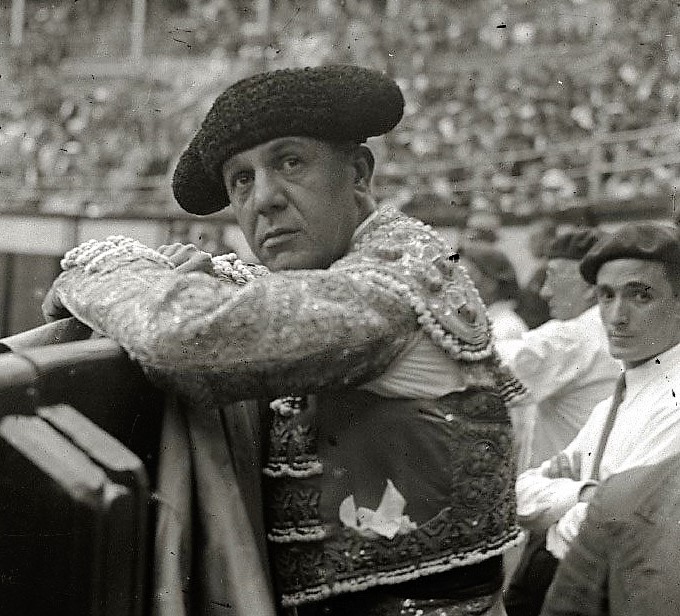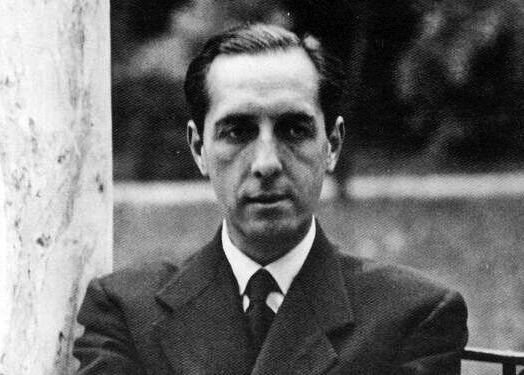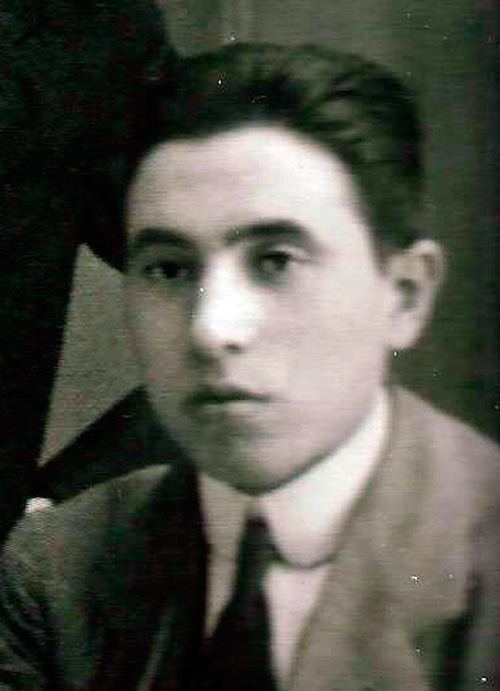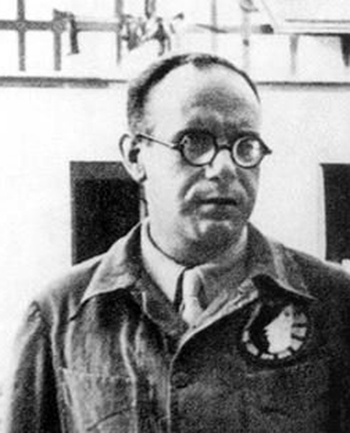Bullfighter and multifaceted man: president of Betis (football club), actor, polo player, writer, friend of the members of the Generation of ’27 and sponsor of the founding meeting of this literary group together with the cattle rancher Fernando Villalón. He was born in Seville on June 6, 1891, and died in Madrid on August 13, 1934, from gangrene after being gored in the Manzanares bullring, two days earlier, by the bull called Granadino, a docile animal that surprised him at the beginning of the bullfight. His death was a great shock among fans and friends. Federico García Lorca composed in his memory one of the summits of Spanish elegiac poetry of all time, the Lament for a Bullfighter, edited a year later by José Bergamín in Cruz y raya and illustrated by José Caballero.
The young Sánchez Mejías, after an adventurous escape to Mexico as a stowaway, joined Joselito’s team as a banderillero in 1910. Five years later Joselito married one of Ignacio’s sisters and became the main one responsible for his bullfighting career. In 1919, he debuted in Barcelona with Joselito himself and Juan Belmonte as witnesses. Death always hovered around his career. In 1920, he was a witness of his brother-in-law’s death in Talavera de la Reina.
Ignacio paid for a lunch for sixty guests at the Real Venta de Antequera (Flamenco eggs, fried fish and oxtail) and then invited them to a party “in style” at his farmhouse, which is part of the literary memory of the Generation of ’27.
Ignacio won over the public less for his technique than for his daredevil displays. Despite his success, in the mid-twenties he retired to devote himself to other pursuits and, in particular, to resume his academic training, which he had interrupted at a very young age, and to cultivate the friendship of intellectuals linked to the Generation of ’27. In fact, in the 1928-29 academic year he resumed his high school studies at the La Rábida Institute in Huelva.
His estate of Pino Montano was the place where the poets of ‘27 who participated in the act of the third centenary of the death of Luis de Góngora gathered. Several of them, including Pedro Salinas, Gerardo Diego and Rafael Alberti, proposed the idea of the meeting at the estate. The proposal was immediately supported by García Lorca, José Bergamín, José Moreno Villa and José María Cossío. On the occasion of the tribute, Dámaso Alonso prepared an edition of Solitude; Salinas of the Sonnets, and Gerardo Diego undertook to finalize an anthology in tribute to Góngora. Sánchez Mejías, for his part, offered to be a patron. The previous commemorative event was held on December 11 in the assembly hall of the La Económica society, located a few steps from the Seville Athenaeum. According to Alberti, the large audience chanted the verses of Jorge Guillén and “asked for García Lorca’s ear” after reciting some of his gypsy ballads.
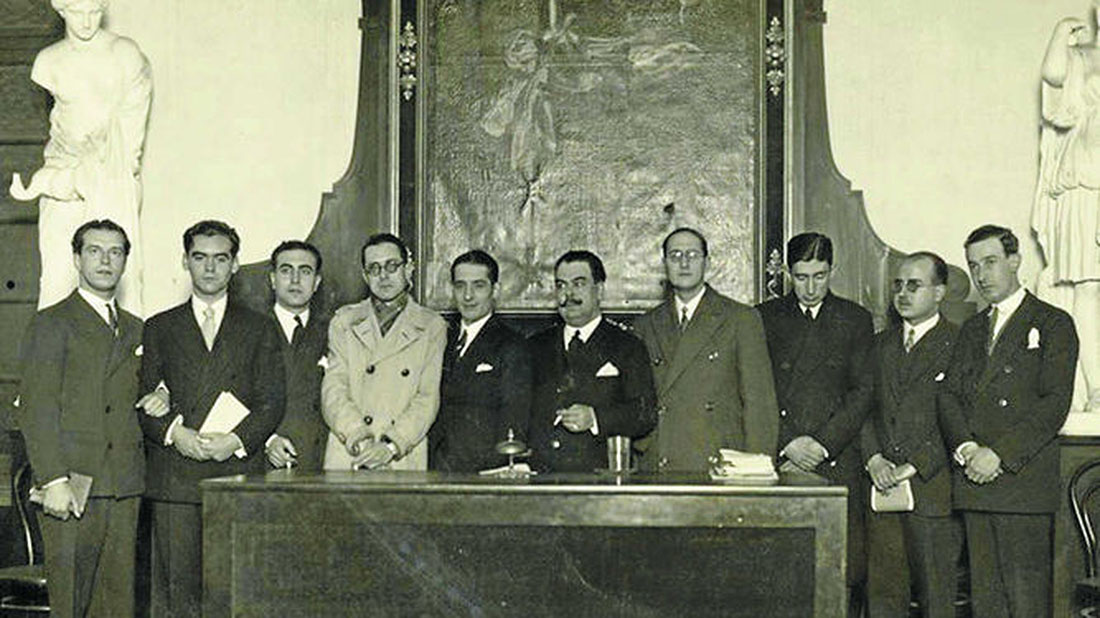
Ignacio paid for a lunch for sixty guests at the Real Venta de Antequera (Flamenco eggs, fried fish and oxtail) and then invited them to a party “in style” at his farmhouse, which is part of the literary memory of the Generation of ’27. The guests appeared in Arab costumes and then a celebration started in which Dámaso Alonso recited from memory the 1,091 verses of The First Solitude, Villalón tried to hypnotize Alberti and García Lorca improvised theatrical fragments. The party ended with Manuel Torre, Niño de Jerez, to whom Federico dedicated in 1931 one of the flamenco vignettes of the Poem of the Deep Song.
Ignacio, a person of great attraction among women, began a half-secret sentimental relationship with La Argentinita. The bullfighter Alfredo Corrochano, friend and member of the bullfighting team that fought in Manzanares on the tragic afternoon of August 11, 1934, remembers the relationship between the two: “I knew La Argentinita very little. Ignacio never showed her. I had dinner with them only one night. She was his great love. But at the same time he felt a great love for his wife, a great lady in spite of all the sorrows”. La Argentinita and Ignacio traveled to the United States in 1929, gave a lecture and sang at the same time as García Lorca’s stay at Columbia University. In 1931, Lorca and La Argentinita recorded the album Collection of Spanish Popular Songs.
The theatrical premieres of Sánchez Mejías Sinrazón occurred in that period. Toy in Three Acts and in Prose, premiered in 1928; Zaya, Comedy in Three Acts and in Prose, staged the same year, and two other pieces never performed during the author’s lifetime: No More, No Less, a Comedy in Three Acts and in Prose and Solitude.
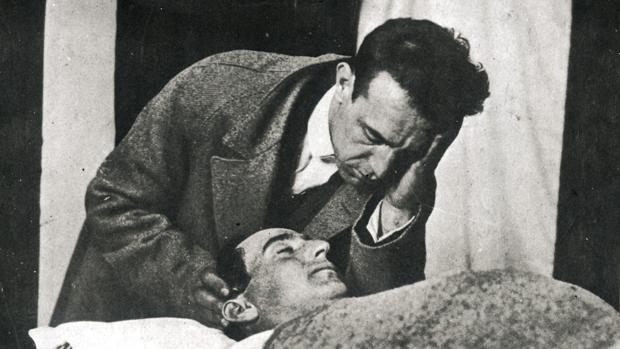
Although he had lost his quickness and was out of training, Sánchez Mejías decided to return to the bullfighting ring in 1934. At that time he was having an affair with the Hispanist and biographer of Lorca Marcelle Auclair. On August 11, he agreed to replace Domingo Ortega in the Manzanares bullring. Alfredo Corrochano describes the catch as follows: “When he took the sword and the muleta he went to give a pass in the stirrup. The bull was coming a little inside. The banderillero warned him: ‘Be careful, maestro, the bull is pressing inside’. He caught him between the boards and pierced his thigh. I enticed the bull away. When they got to him, he was dead.
“I went to see him in the infirmary between bulls,” Corrochano continued. “They say that the bullrings infirmaries are bad now. Manzanares’ had a bottle of cotton, a pot of iodine and another of water. And a very nice doctor. ‘How’s it going,’ I asked him, ‘Don’t worry,’ Ignacio replied.”
Sánchez Mejías died from gangrene two days later in a Madrid hospital and soon after García Lorca began the composition of the Lament for a Bullfighter: “Tardará mucho tiempo en nacer, si es que nace [“It will take a long time to be born, if he is born,] / un andaluz tan claro, tan rico de aventura. [an Andalusian so clear, so rich in adventure.] / Yo canto su elegancia con palabras que gimen [I sing his elegance with words that moan] / y recuerdo una brisa triste por los olivos [and I remember a sad breeze through the olive trees”.]
